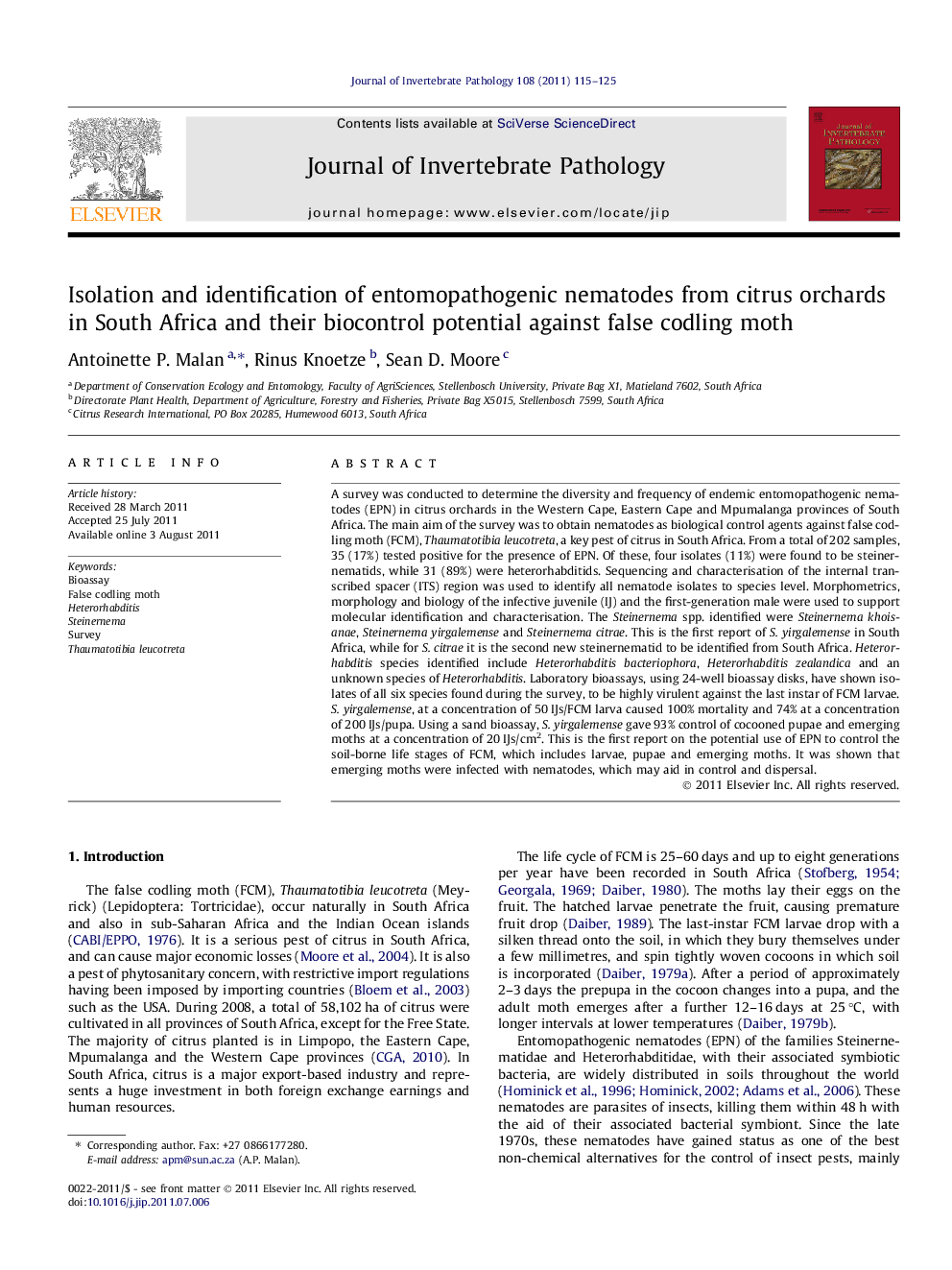| Article ID | Journal | Published Year | Pages | File Type |
|---|---|---|---|---|
| 4557962 | Journal of Invertebrate Pathology | 2011 | 11 Pages |
A survey was conducted to determine the diversity and frequency of endemic entomopathogenic nematodes (EPN) in citrus orchards in the Western Cape, Eastern Cape and Mpumalanga provinces of South Africa. The main aim of the survey was to obtain nematodes as biological control agents against false codling moth (FCM), Thaumatotibia leucotreta, a key pest of citrus in South Africa. From a total of 202 samples, 35 (17%) tested positive for the presence of EPN. Of these, four isolates (11%) were found to be steinernematids, while 31 (89%) were heterorhabditids. Sequencing and characterisation of the internal transcribed spacer (ITS) region was used to identify all nematode isolates to species level. Morphometrics, morphology and biology of the infective juvenile (IJ) and the first-generation male were used to support molecular identification and characterisation. The Steinernema spp. identified were Steinernema khoisanae, Steinernema yirgalemense and Steinernema citrae. This is the first report of S. yirgalemense in South Africa, while for S. citrae it is the second new steinernematid to be identified from South Africa. Heterorhabditis species identified include Heterorhabditis bacteriophora, Heterorhabditis zealandica and an unknown species of Heterorhabditis. Laboratory bioassays, using 24-well bioassay disks, have shown isolates of all six species found during the survey, to be highly virulent against the last instar of FCM larvae. S. yirgalemense, at a concentration of 50 IJs/FCM larva caused 100% mortality and 74% at a concentration of 200 IJs/pupa. Using a sand bioassay, S. yirgalemense gave 93% control of cocooned pupae and emerging moths at a concentration of 20 IJs/cm2. This is the first report on the potential use of EPN to control the soil-borne life stages of FCM, which includes larvae, pupae and emerging moths. It was shown that emerging moths were infected with nematodes, which may aid in control and dispersal.
Graphical abstractUsing a sand bioassay, Steinernema yirgalemense gave 93% control of cocooned pupae and emerging moths at a concentration of 20 IJs/cm2, 7 days after treatment. Moths infected with nematodes were able to emerge normally and to fly away from the sand surface, before being trapped in the surrounding container.Figure optionsDownload full-size imageDownload as PowerPoint slideHighlights► Six EPN species found during a survey of citrus orchards. ► Steinernema yirgalemense reported from South Africa. ► Bioassays with nematodes using the soil stages of the false codling moth Thaumatotibia leucotreta. ► Infection of emerging moths escaping from sand and aerial transport of nematodes shown.
